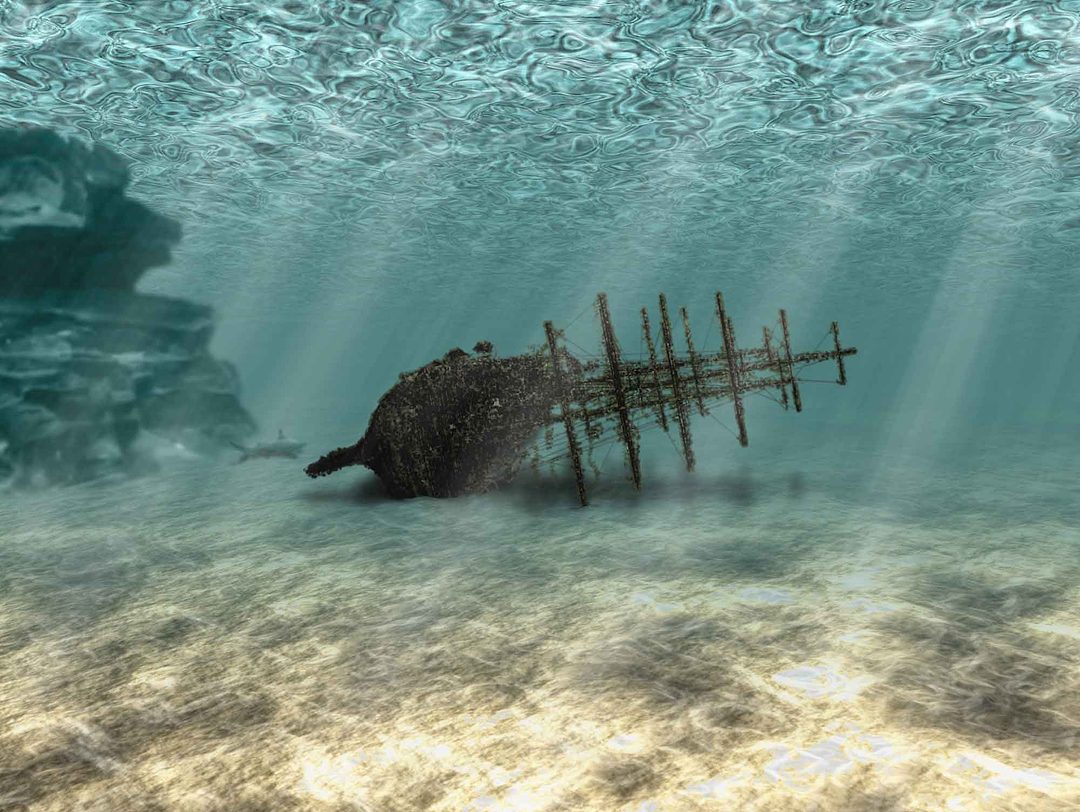In 1853, American writer Nathaniel Hawthorne crossed paths with the infamous clipper transport ship The Yorkshire. While the man and the ship led separate lives, each was entwined with the sea and their fates were destined to meet again years later in Nathaniel Hawthorne’s final hometown of Concord, Massachusetts. This is that story.
Born July 4, 1804, and descended from “the hanging judge of the Salem witch trials,” Nathaniel Hawthorne came from a family steeped in the oceans’ peril. During the American Revolutionary War, his grandfather, Captain Daniel Hathorne, nicknamed “Bold Daniel,” was a privateer, patrolling the waters near New England and stalking the far-off treacherous coasts of Scotland and Portugal. The official American Navy had not yet been founded, and Hawthorne’s grandfather and other privateers were half protectors of America and half pirates, sanctioned by the American colonists to attack English ships and profit from their plunder.

Nathaniel Hawthorne
| Library of CongressIn a more respectable manner, Hawthorne’s father was a sea captain, traveling for trade to the West Indies, Africa, and South America. When Hawthorne was just four years old, his father became ill and died at sea. Hawthorne, his sister, and mother, moved in with his grandfather in Salem and there Hawthorne grew up surrounded by the seaside town’s history, stories from travelers, and his family’s dark role in the Salem witch trials.
By the year 1817, Hawthorne was beginning to think about attending college.
At the same time, to the south of Massachusetts in New York, a group of Quaker merchants was forming a line of clipper transport ships. The men included Jeremiah Thompson, father and son Issac and William Wright, Francis Thompson, and a non-Quaker, Benjamin Marshall. With an initial fleet of four, their ships became the first of their kind to carry mail, goods, and passengers, sailing between New York and Liverpool, England. Flying high atop the ships’ masts, a red flag adorned with a black ball streamed proudly in the wind, eventually inspiring the fleets’ name of The Black Ball Line. While highly skilled seamen commanded the ships, most of the crews were desperate men plucked straight from prisons. And although many of the founders were peaceful Quakers and abolitionists, the Black Ball Line was notorious for vicious treatment of the lower seamen.

The Wayside
| commons.wikimedia.orgIn 1821, as the Black Ball Line began anchoring its seafaring reputation, Nathaniel Hawthorne attended Bowdoin College in Maine. There he met fellow classmate Franklin Pierce, and the two became lifelong friends.
After college, Hawthorne began a writing career gaining some early success. On his wedding day in 1842, Hawthorne and his bride, Sophia Peabody, moved to Concord, Massachusetts, where they rented Ralph Waldo Emerson’s ancestral home, the Old Manse. They lived there for three years during which time Hawthorne compiled his book Mosses From An Old Manse.
At the same time, back in New York, great changes were happening in the design of the Black Ball Line.
Shipping and passenger transport was a competitive business, even in-house, and the Black Ball Line captains bet against each other as to who could be the fastest back and forth across the ocean. The need for speed created a dangerous race and drove the redesign of ships.

United States Consular document signed by Nathaniel Hawthorne
| ©Barrow BookstoreInspired by English opium running ships that were made to be small and fast to evade authorities as English crews trafficked illicit opium between India and China, the Black Ball Line redesigned its ships and in 1843 The Yorkshire was added to the packet, soon proving her place as the fastest ship in the fleet and pride of the entire Black Ball Line.
As the years passed, both the ship and Hawthorne’s fame grew. The Yorkshire raced back and forth between New York and Liverpool, and Hawthorne moved back to Salem, Massachusetts where he worked as a surveyor in the Custom’s House. In 1850, he published The Scarlet Letter, and a year later The House of the Seven Gables.
In 1853, Franklin Pierce became the United States’ 14th president and appointed Hawthorne to be Consul in Liverpool. With his family, Hawthorne moved to England. It was there, in October of 1853, that The Yorkshire, under the command of Captain Edward Young, once again sailed into port where, this time, it was met by U.S. Consul Nathaniel Hawthorne. Of the crewmen he met, Hawthorne wrote that they are the “most rascally set of sailors that ever were seen - dirty, desperate, and altogether pirate-like in aspect.”
Leaving the sailors on the ship, Hawthorne escorted Captain Young to the Consular Office where Hawthorne formally documented receipt of the ship. Along with Captain Young, Hawthorne signed a Consul document verifying the goods of The Yorkshire and applying the official U.S. Consulate seal to the document.
Nine years passed. By 1862, Hawthorne had returned to America and was living at The Wayside in Concord. The American Civil War was causing strife on land; and on the open waters, the Black Ball clipper ships were still racing each other across the Atlantic.
On February 2, 1862, The Yorkshire once again set sail from New York to Liverpool. In addition to her cargo, she was carrying three passengers and 32 crew. She was never seen or heard from again.
Two years later, while on a trip to New Hampshire in the company of Franklin Pierce, Nathaniel Hawthorne died. He was buried in Sleepy Hollow Cemetery in Concord, Massachusetts.
Twenty miles to the east of Hawthorne’s grave is the Atlantic coastline and somewhere, out in that vast ocean, presumably rests The Yorkshire, her cargo, and the remains of 35 souls she had aboard.
In a poem called “The Ocean,” Nathaniel Hawthorne wrote,
The ocean has its silent caves,
Deep, quiet and alone;
Though there be fury on the waves,
Beneath them there is none.
The awful spirits of the deep
Hold their communion there;
And there are those for whom we weep,
The young, the bright, the fair.
Calmly the wearied seamen rest
Beneath their own blue sea.
The ocean solitudes are blest,
For there is purity.
The earth has guilt, the earth has care,
Unquiet are its graves;
But peaceful sleep is ever there,
Beneath the dark blue waves.
Over a century and a half passed. On July 4, 2021, on the 217th anniversary of Nathaniel Hawthorne’s birth, the memory of Hawthorne and The Yorkshire resurfaced together when an “Autograph Edition set of the Works of Nathaniel Hawthorne” sailed into Concord’s Barrow Bookstore. Bound into Volume One, quietly waiting to be found, is the United States Consular document signed and sealed by Nathaniel Hawthorne and Captain Young for receipt of The Yorkshire’s 1853 arrival in Liverpool. Their meeting in life, bound together for eternity, a story among many, waiting to be found.
Visit Barrow Bookstore’s YouTube channel for the audio version of this article.


